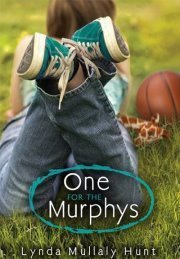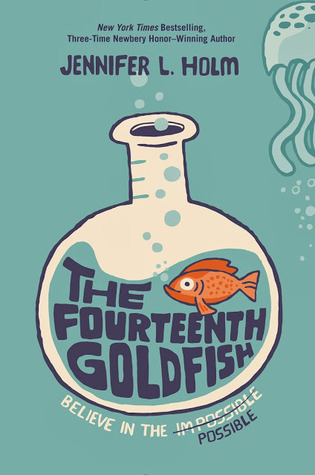It's October 1st and that means two exciting book events are starting now/soon: Cybils Awards Nominations are open today and the Global Read Aloud begins October 6th! The Cybils Awards are always exciting, but I'm even more excited this year because I am a Round 2 Middle Grade Fiction Judge. I can't wait to see what the nominees will be! The Global Read Aloud is extremely exciting this year, also, because The Miraculous Journey of Edward Tulane by Kate DiCamillo, one of the choices of #GRA14, is one of my all-time favorite read alouds. In honor of this choice, I'm re-blogging a post I wrote for Nerdy Book Club in 2012:
I read the gorgeous book The Miraculous Journey of Edward Tulane by Kate DiCamillo aloud to my 5th grade class at the beginning of every year. It becomes a touchstone (mentor text) in my classroom for the rest of the school year. The first year I decided to share this book, I was a little nervous about the boys, especially, that they would be too “cool” to enjoy a story about a china rabbit. Those fears were quickly assuaged, however, as soon as they began the journey with me. The miracle of the book itself is that it is so well done that you are swept away with Edward immediately and wrapped up in the beautiful language that Kate DiCamillo so expertly crafts. One of the skills she uses is the well-placed cliffhanger at the end of each short chapter. What teacher doesn’t love the groans emitted from the class when you end a chapter and say, “That’s all for today”?! The first time I read it aloud, I’ll never forget the tears streaming down an enraptured fifth grader’s face when I read the end line. It now happens every year. The power of a story!
The following summer, after I shared this book for the first time, I read How to Read Literature Like a Professor by Thomas C. Foster. My daughter had to read it for Advanced Placement English, and was so enthusiastic about it, she asked me to read it, too. I am so glad I did! It’s funny and accessible to all readers and can change how you read and understand literature.
Even though it is written for high school and college students, I realized I could adapt the ideas to fifth grade. I decided to try it when I read The Miraculous Journey of Edward Tulane again that September. The first concept in How to Read Literature Like a Professor is that every trip is a quest, and that “The real reason for a quest is always self-knowledge.” Foster goes on to explain that it is the reason why questers are often young, inexperienced, immature, or sheltered (think Huck Finn, Luke Skywalker, Frodo Baggins). In our case, Edward is all of these things as well as selfish and vain. In the beginning of the book, Edward prefers winter (we’ll talk about that in a minute!) because “the sun set early then and the dining room windows became dark and Edward could see his own reflection in the glass. And what a reflection it was!” His quest begins against his will when he is thrown overboard a ship, but it begins nevertheless. In our “Big Questions” activity when we preview our read alouds, students generate what they think will be the essential questions in the book, and we post them on the wall. Then throughout the book we try to answer these questions. After reading the poem in the very beginning, and naming some characteristics of Edward when he lives on Egypt Street with Abilene, the kids inevitably ask what he will learn on his journey. This ends up being the first time we learn about theme.
Even though it is written for high school and college students, I realized I could adapt the ideas to fifth grade. I decided to try it when I read The Miraculous Journey of Edward Tulane again that September. The first concept in How to Read Literature Like a Professor is that every trip is a quest, and that “The real reason for a quest is always self-knowledge.” Foster goes on to explain that it is the reason why questers are often young, inexperienced, immature, or sheltered (think Huck Finn, Luke Skywalker, Frodo Baggins). In our case, Edward is all of these things as well as selfish and vain. In the beginning of the book, Edward prefers winter (we’ll talk about that in a minute!) because “the sun set early then and the dining room windows became dark and Edward could see his own reflection in the glass. And what a reflection it was!” His quest begins against his will when he is thrown overboard a ship, but it begins nevertheless. In our “Big Questions” activity when we preview our read alouds, students generate what they think will be the essential questions in the book, and we post them on the wall. Then throughout the book we try to answer these questions. After reading the poem in the very beginning, and naming some characteristics of Edward when he lives on Egypt Street with Abilene, the kids inevitably ask what he will learn on his journey. This ends up being the first time we learn about theme.
Another concept Foster discusses is symbolism, and Kate DiCamillo’s books are full of them (think of the light and dark symbols in The Tale of Desperaux). Stars throughout The Miraculous Journey of Edward Tulane symbolize light and hope. Doors open and close throughout the story, symbolizing beginnings and endings. Seasons and weather are not just seasons and weather. Edward enjoys winter in the beginning, which is important to note. Winter symbolizes emptiness. Edward’s heart in the beginning is desolate – he doesn’t love or care about anyone but himself. In the end, it is springtime, symbolizing hope and love. It also happens to be raining, which Foster explains is “never just rain.” Rain symbolizes reclaiming in this story. I don’t want to spoil the end if you haven’t read it yet, but let’s just say that’s the perfect interpretation.
I also first introduce the concept of allusions through this book. I know fifth graders aren’t required to know about allusions, but they can certainly learn the word and understand it anyway. Foster says in two chapter titles, “When in Doubt, It’s from Shakespeare…” and the next chapter, “…Or the Bible.” There are several allusions to the Bible in DiCamillo’s work. The first one we see is that Edward begins his journey in water. Foster says if a character comes up, it’s baptism. He is reborn, gets to start over, or changes. Another reference we see is when Edward is in the dump for 40 days and 40 nights. Sound familiar? Edward stays with Bull, the hobo (my students LOVE that word) and his dog, Lucy, for seven years. Scripture is saturated with the number seven. It is the symbol of completion in the Bible. The last example I have was actually pointed out to me by a student. Do you know that feeling of being completely covered in goose bumps when a student discovers something you’ve never thought of before? That was me when a fifth grader pointed out that Edward was a Christ figure when he was hung from a pole in an old woman’s garden. “She nailed his velvet ears to the wooden pole and spread his arms out as if he were flying and attached his paws to the pole by wrapping pieces of wire around them.” Wow! And what does it mean to have a Christ figure in a story? Sacrifice, death, redemption, resurrection…all of which happens to Edward!
Now that we’ve analyzed The Miraculous Journey of Edward Tulane, I want to be clear that the story is first and foremost meant to be enjoyed. My classes have LOVED Edward and the characters he meets; they have laughed, cried, and yearned for more during the experience of listening to this amazing book. It also has one of the best crafted endings in all of children’s literature. I would encourage everyone to go on this miraculous journey!
Now - go vote for your favorite children's books in all categories at the Cybils Awards site and sign up for one of four fabulous books to read aloud or an author study (Peter H. Reynolds) October 6th - November 14th and connect with other educators and classes at Global Read Aloud!






I am currently reading Edward aloud to my afternoon group. They love it. I agree that it makes a great mentor text. I read it to another group a few years ago and we talked about it all year long. I noticed all of the Christian symbols as well. Such an amazing piece of literature for so many reasons. Do you discuss archetypes with your students? Any resources to share?
ReplyDeleteExcited to be a Cybils judge for poetry!